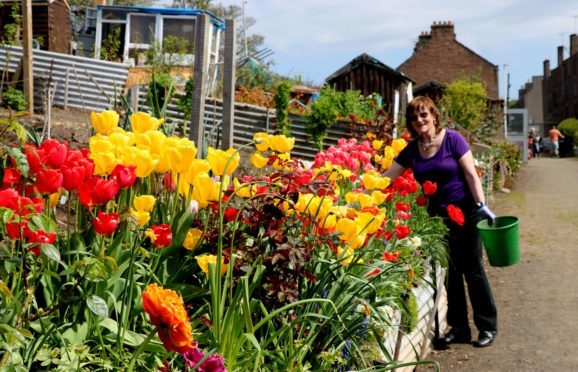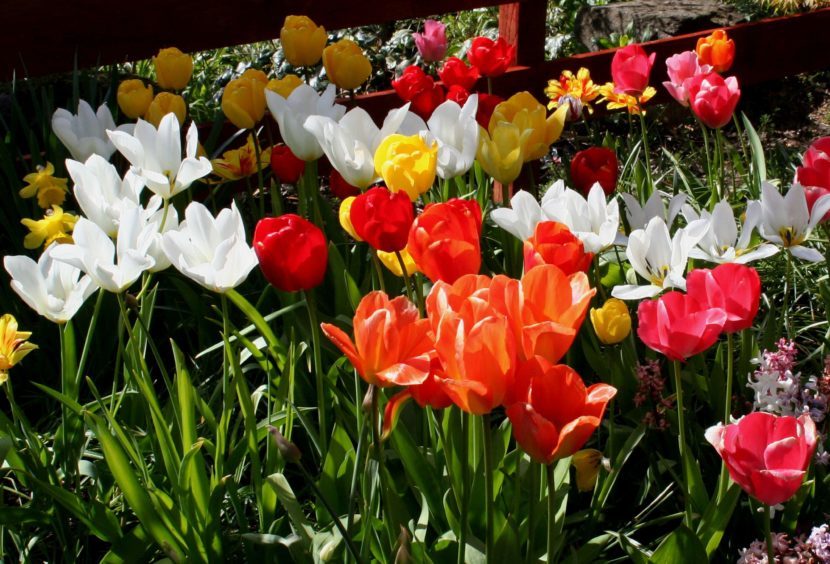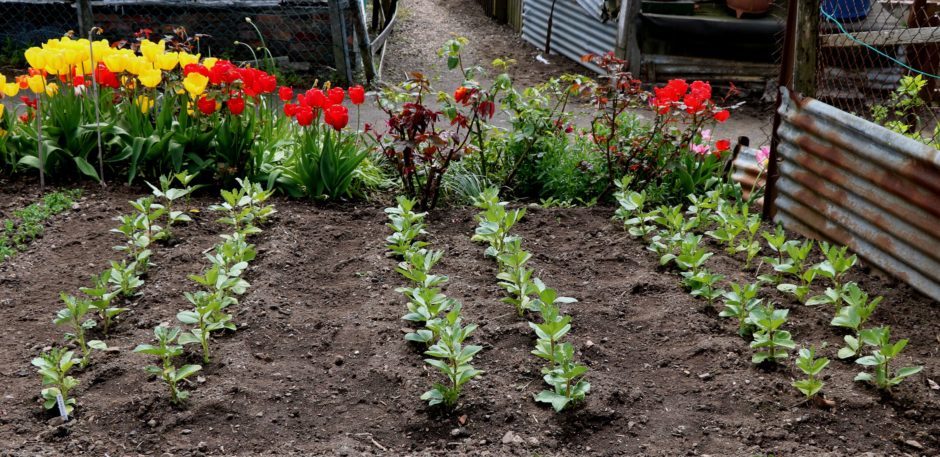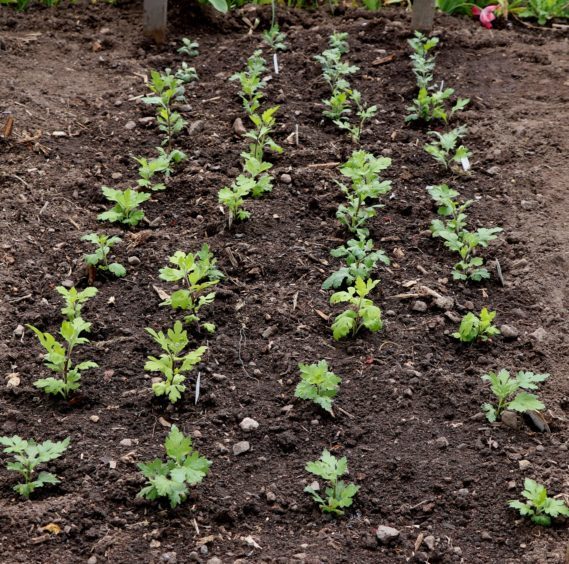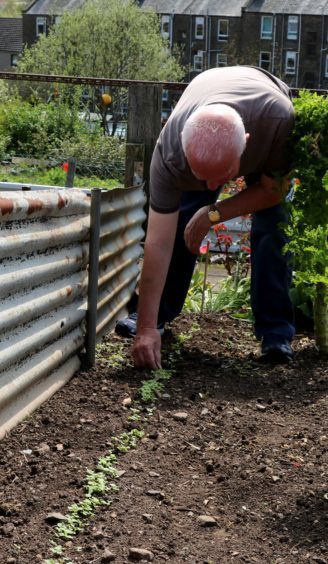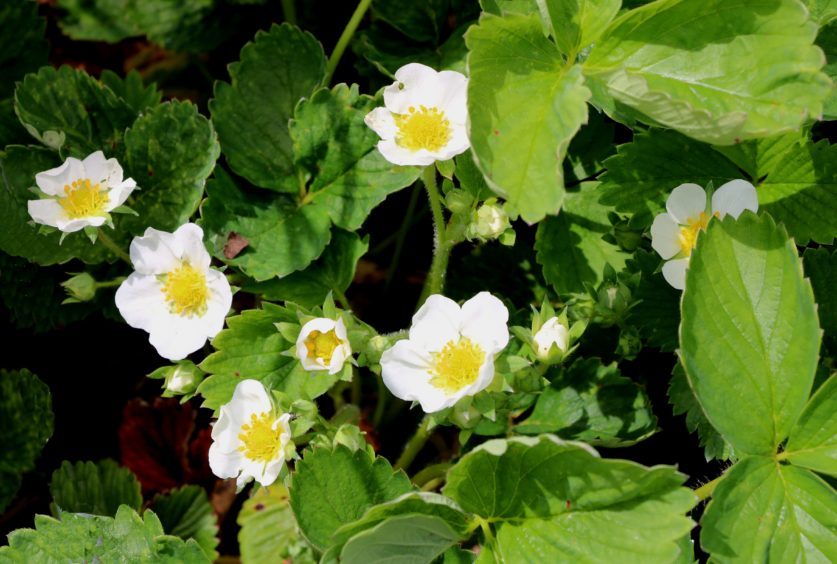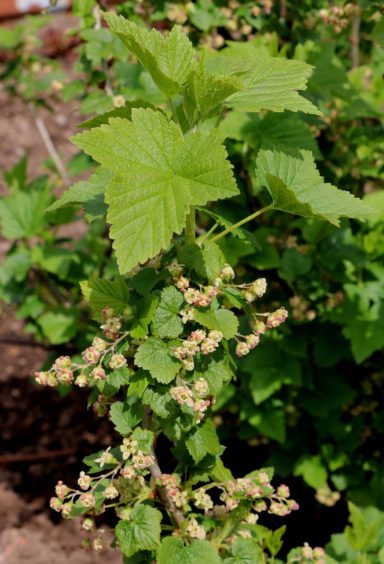Weather on Tayside has been perfect for gardening these last few weeks. We have had enough rainfall to moisten the soil, followed by some dry warm days to catch up on planting and sowing.
Green manure crops of tares and clover sown last autumn have all been dug in.
Their fibrous root system has been great for breaking up the soil and it has been easy to get a good deep surface tilth.
Lettuce, radish, spring onions, beetroot and rocket were all sown several weeks ago in the greenhouse in cellular trays to give me strong plug plants for planting.
They were planted in the shelter of my south facing allotment fence (sheets of corrugated iron) to give them ideal conditions for rapid growth so harvesting can begin in a few weeks time for some, though the beetroot takes a wee while longer.
These salads will be followed by more of the same sown direct outdoors to give a succession of cropping.
I have extended the salad sowings to include a row of Red Veined Sorrel, Rainbow Chard and Spinach Matador.
Turnip Golden ball for summer picking and Swede Best of All for cropping in autumn and winter were also sown.
Other root crops included Beetroot Detroit, and Cylindra, Parsnip Albion and Student. Parsnips are slow to germinate so it is necessary to mark the rows and as I have found germination to be a bit erratic I sow the seeds thicker than normal.
If I get a good germination they can easily be thinned out.
I am also trying out some Salsify, a root crop I grew 40 years ago, so thought I would try it again.
A row of Carrot Nantes has been sown in between four rows of onions in the hope of escaping the attention of carrot fly.
These onion sets planted in mid April are now all growing strongly.
I have two varieties, Centurion and Stuttgarter Giant for comparison.
Leeks sown in early March are all through the ground but still quite small as good warm growing weather has been in short supply.
Potatoes are all through and although they were earthed up against a late frost a few weeks ago they now need another final earthing up.
Broad bean Aquadulce sown in early March was a fast grower so quickly hardened off and got planted out in mid April.
They are well established but need constant checking for pea and bean weevils, where one or two can be found on nearly all plants.
Sweet corn Incredible sown two months ago grew quickly, to allow planting of good sized plants two months later.
They like fertile soil and a fair spacing to achieve good sized cobs.
Brussels sprouts Crispus, Cabbage Kilaton and Cauliflower Clapton were all sown carefully in the best conditions to achieve maximum germination.
They are all clubroot resistant and seem to be very expensive as there are only 20 seeds in each packet.
The cabbage and cauliflower were sown in batches of ten seeds each with the rest to be sown a couple of months later to give successional cropping.
Cut flower plants such as Sweet peas, Gladioli and Chrysanthemums are important to add colour to the plot as well as flowers for the house, and the allotment plot has a flower border that is just a riot of colour with tulips and daffodils creating a dramatic spring display.
Strawberries, gooseberries, blackcurrants, redcurrants and bramble Helen are now all flowering and looking good.
One row of strawberries is under tunnels, but these have to be opened to allow pollinating insects to find them as well as letting in some of our heavy summer showers. Last year I picked my first strawberry at the end of this month, but as the season is running three to four weeks late I may have to wait till June for my first berry, unless the jet stream moves north and lets in some warm sunny weather from the south. Fingers crossed!!!
Wee jobs to do this week
Tulips may have had a late but brilliant spring but now they are going over it is time to dead head them so the plant can retain its energy for building up a good bulb to flower next year.
Those bulbs grown in tubs which are to be replaced with summer bedding plants, can be carefully lifted with a good ball of soil and replanted in a border to add colour in following years.
